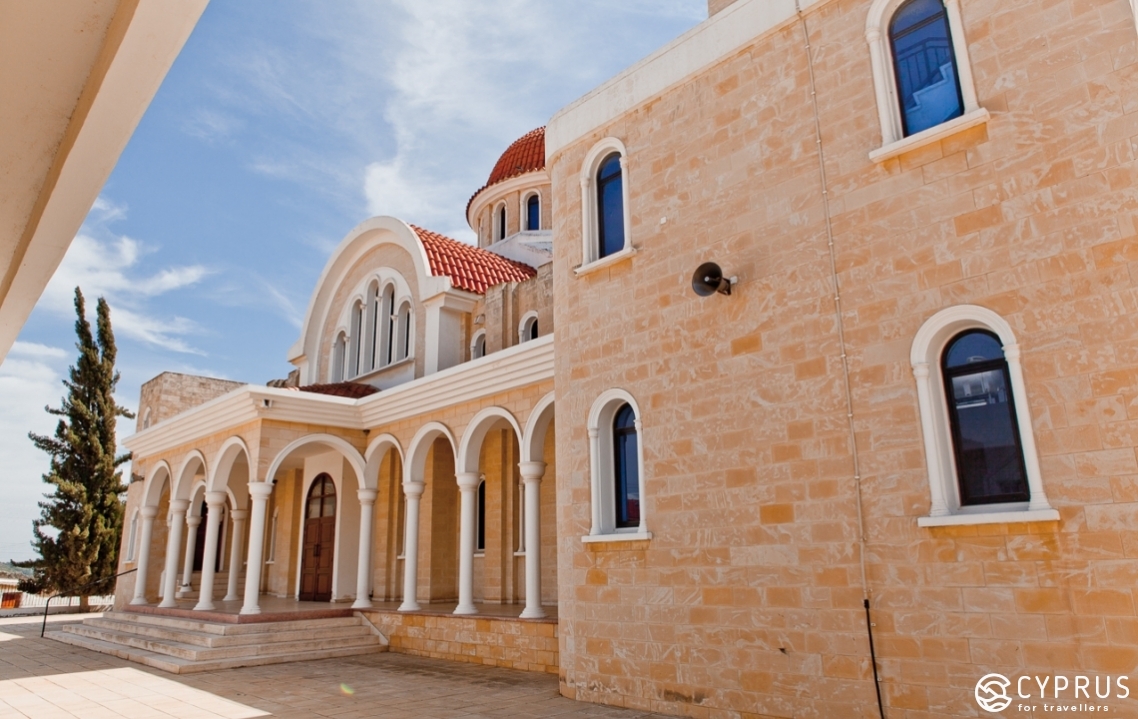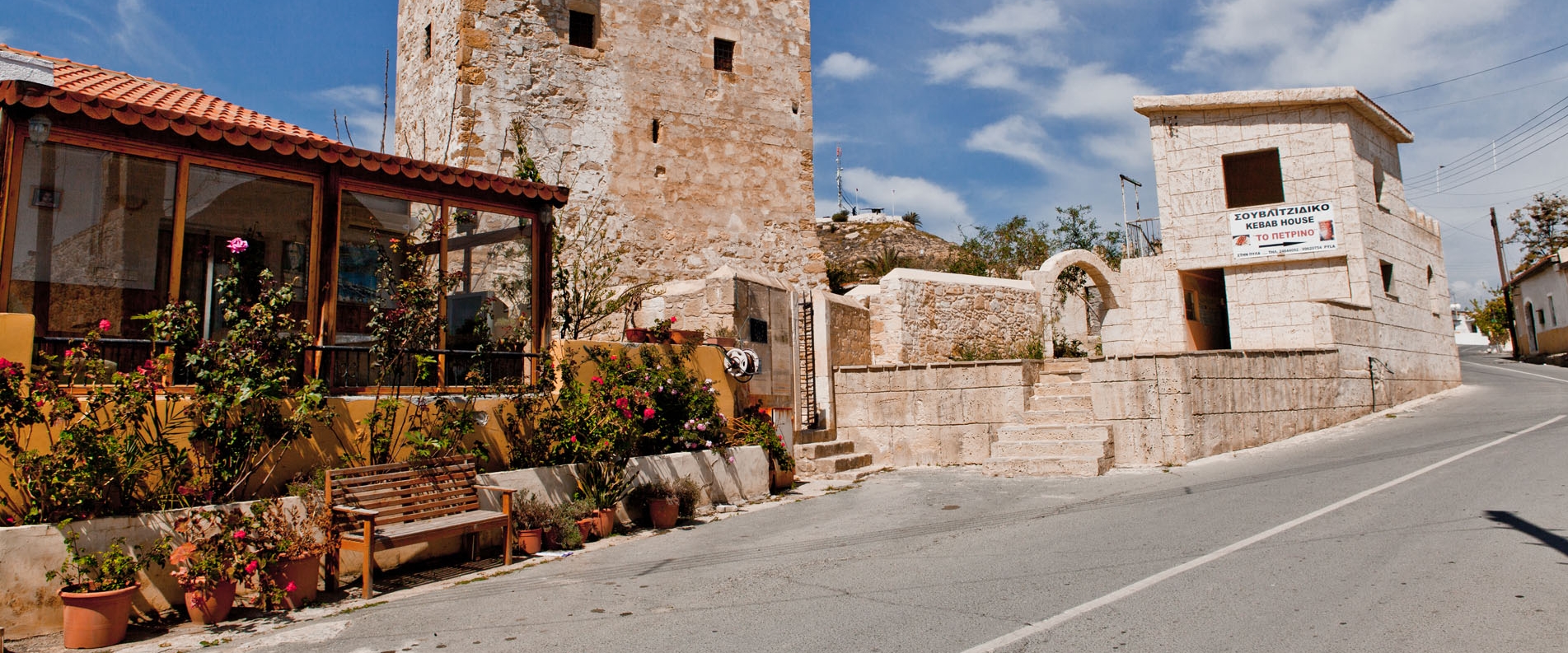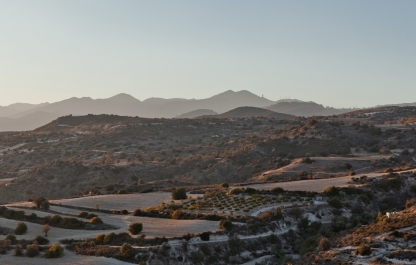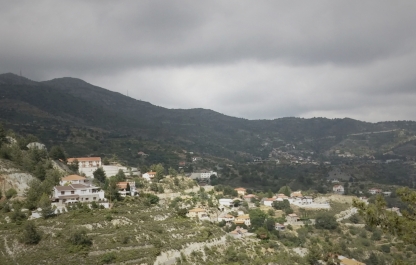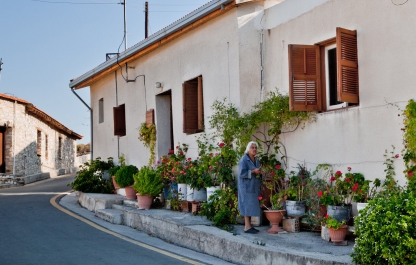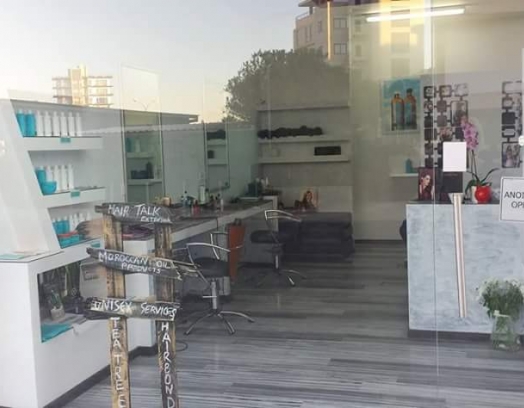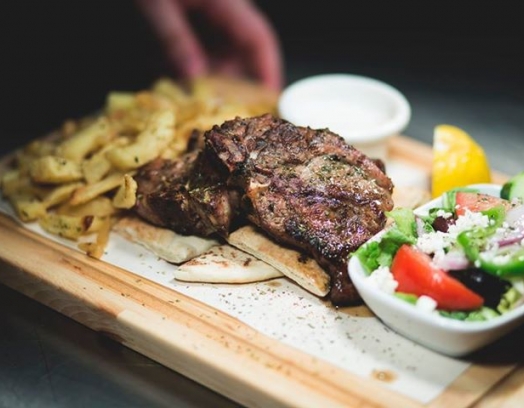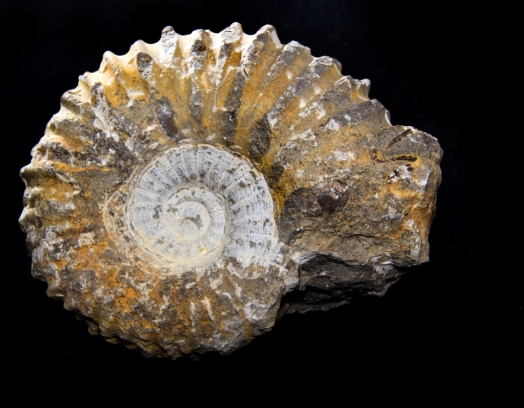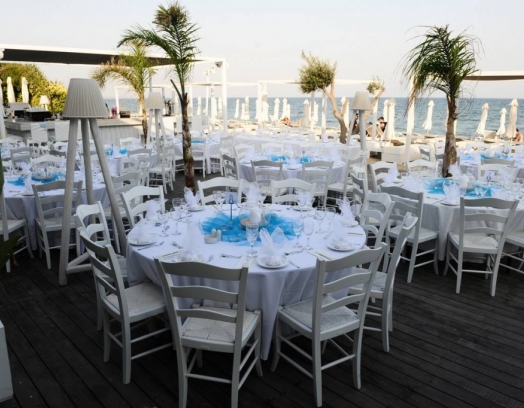Pyla (Greek: Πύλα; Turkish — Pile) is a unique village near Larnaca and one of the oldest in Cyprus. Both Greeks and Turks have lived here together for centuries (850 Greeks, 490 Turks.) Its name stems from the word «πύλη» (pYli), which translates from Greek as «gates». It is thought to be linked to the village's location: it seems to stand at the threshold of the Mesaoria valley.
Historians believe that its name could also point towards Pyla’s key role in establishing contact with the neighbouring Salamis island.
Pyla and its surrounding area is mainly engaged in agriculture, specifically grain crops and olive groves. There are also a sizeable vineyards (in the past, they dominated the area and played a big part in the development of the regional farming right up to the 1970s. Grapes were grown for wine and vinegar production among others.)
The village is pretty green and as you drive in, it seems like a modern and comfortable place to live and stay. Large houses line its wide avenue-like streets, interspersed with gardens and fields.
However, as you drive further towards the centre, it soon becomes clear it's not a tourist destination and some areas are not so ideal. For example, we noticed Pyla somewhat lacks the open, welcoming atmosphere that other villages commonly have. The village doesn't have all the usual places or things tourists look for. In fact, there was a slightly detached vibe: people look at new faces in town with a certain cool curiosity as they walk down the deserted streets. Nevertheless, old Pyla has a charm to it and a unique feel thanks to its dual community.
Take a walk to the village centre and you'll see the offices of the local mukhtars (notaries) and community council buildings. They are separate: Greek and Turkish, with signs in their own respective languages. They even stand opposite each other: Turkish on the left, Greek on the right.
You will also see the recognisable flag of the UN hanging over a small post: the organisation has been in Cyprus since 1964. However, following the Turkish occupation of the northern territories, they expanded their presence and authority in 1974. Basically, they're not just stationed in Pyla but in a further 3 Cypriot villages that ended up in the buffer zone: Athienou, Troulloi, and Deneia.
Then there’s the Greek taverna, Macedonia, painted in the traditional Greek blue and white. It turns out it is a popular place with both local Greeks and Turks: they watch TV, occasionally switching channels between Greek and Turkish, and the regulars play belote. If you stay here and spend some time with the locals, they’ll tell you one and the same thing: big politics and large countries have no place getting involved in Cypriot affairs, you need to leave the past in the past, and both communities should be able to maintain their equal co-existence.
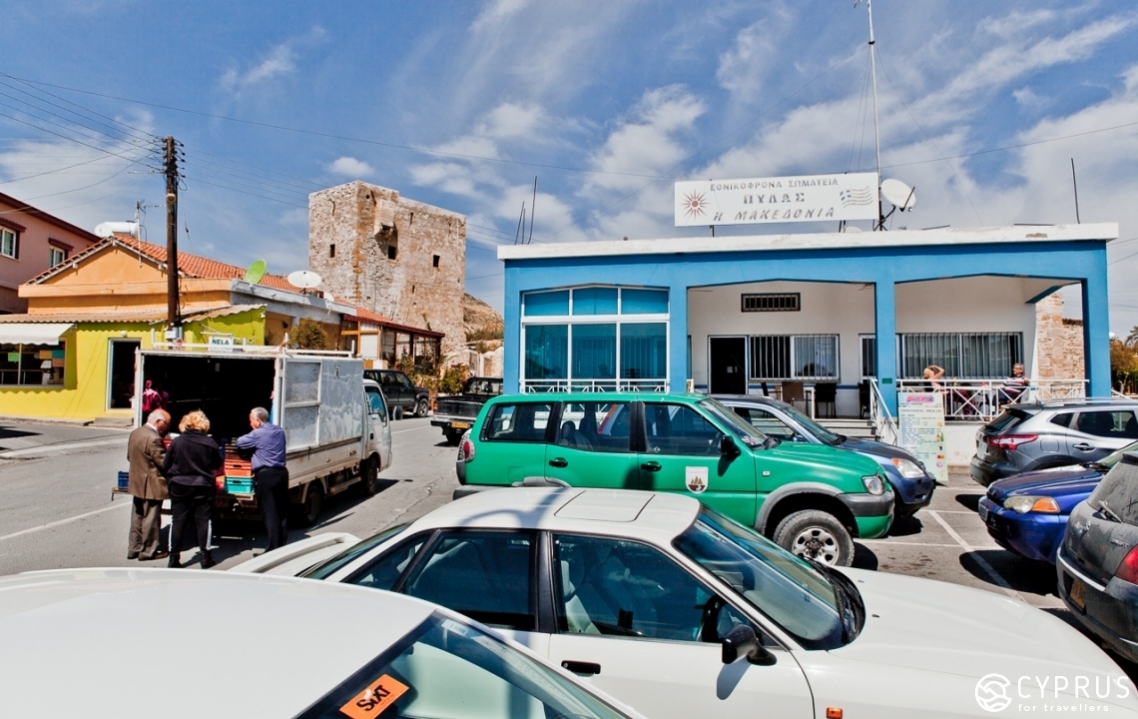
The locals of Pyla are seen by the rest of Cyprus as being «a breed apart».
I was lucky enough to meet and talk to a long-time local about their memories and found out the following: when the war started in 1974, the whole village decided to escape to the British army base where Greek and Turks had been living for months in the barracks. When the war ended, the locals returned to Pyla. The thing was, the Turkish troops did everything they could to try and stop the Turkish Cypriots returning to their villages by trying to scare them with the threat of Greek Cypriot rule...
Pyla is also marked by a divide in society down political and cultural lines: local children attend either a Turkish or Greek school, and the locals drive cars with different number plates: that of the Republic of Cyprus or the part of Cyprus occupied by Turkey.
If a crime is committed in town, the UN oversees the investigative process with the Greek and Turkish police.
Archaeological digs revealed that the first settlement here dates back to the early and mid bronze ages (2400-1700 BC). With the arrival of the Franks in the Middle Ages, the land became the property of the royal family (the first monarch to lay claim was Prince John II of Gallilee who died in 1315. Later, Pyla was owned by his heirs, the de Giblet family).
The Ottoman Turks arrived in 1570-1571 and, interestingly enough, they left the local government that had formed during the Venetian period practically unchanged.
In all likelihood, the traditions have survived since that time and it was then that the enduring customs and way of life for two cultures, one local one foreign, living together in one village were defined and developed.
Therefore, this village’s main draw for tourists is its dual nature, the two cultures living side by side, and their different rural architectural styles.
The difference in styles is visible immediately. The Greek houses have large terraces and open archways while the Turkish houses are a little more closed off to the outsider’s gaze, where life carries on quietly and unnoticed. However, when it’s time to rest and relax, their inhabitants will come outside and you’ll often hear the sounds of Turkish conversation float by.
It is thought that Pyla has been a settlement since the early and mid-Bronze age (2400-1700 BC). The ancient residential buildings and necropolis in the region are to the south of modern-day Pyla towards the coast. After all, back then the local inhabitants of Pyla and other villages and city states prioritised trade by sea and made efforts to develop it.
There have been excavations here for centuries. For example, in 1868 Robert Hamilton Lang, a Scottish diplomat and a famous collector of antiquities (1832-1913) oversaw digs in the southeastern part of the village, more specifically in Stavros, where he discovered the ruins of a sanctuary that dated back to antiquity and inspired the continuation of classicism and Hellenism. They worshiped Apollo and Artemis. Subsequently, it was devastated and plundered. Nevertheless, several two-metre statues made of limestone, clay figurines, and inscriptions referring to Apollo under the epithet «Mageirio» were found in the former church. Thanks to Lang's work and research, several European and American museums expanded their collections with the addition of artifacts from Cyprus (including the Kunsthistorisches Museum in Vienna).
Ruins dating back to the Late Bronze Age (1700-1125 BC) were discovered near the village during digs held in the 1930s and 1950s by the Department of Antiquities and the renowned «father of Cypriot archaeology», Dr. Porfirios Dikaios. The area was explored again much later, in the 1980s by another prominent researcher, Vasos Karayorgis (born in 1929) at several sites: Verki, Koukoufouthkia and Steno.
Residential buildings that date back to the late bronze age (about 1230 BC) were discovered in an area called Kokkinokremmos. Their walls once formed a fortified wall around the settlement. Historians believe it was founded by the Achaeans, who later moved inwards to the centre of the island (where ceramics in line with Cretan-Minoan culture were found and identified). They had arrived in Cyprus after the fall of the cities of the Mycenaean civilization following the invasion of Greece by the Northern Greek Dorians.
These days, a lot of the artefacts found in and around Pyla can be found in the collection of the Cyprus Museum in Nicosia.
In the Iron Age (1050-475 BC) Cyprus had large city-states. The region containing Pyla rose up to hold an important position. The village’s outskirts border on Kition so it is likely that Pyla also belonged of the ancient kingdom of Kition (from the 13th century BC onwards).
The area maintained its important status until late Hellenism, which is evidenced by surviving manuscripts and other written sources, archaeological finds, ruins of houses and tombs, as well as the temples and ancient churches that were built along the coast.
Pyla’s Main Sights
There are several sights worth visiting in the heart of Pyla: the Venetian tower (the Pyla Tower, which is on the UNESCO protection list), the mosque, the ancient churches of Archangel Michael and Panagia Asprovouniotissa, the local history museum and the modern church of Agios Georgios. Let's explore them in more detail.
The Pyla Tower is a tall structure, built in the Middle Ages by the Venetians. It is an impressive stone observation tower with a lift. Its entrance is on the third floor and is accessible by a metal staircase that leads up to it. In ancient times, the entrance was probably reached by a suspension bridge or wooden staircase. There is currently nothing inside the tower which was built to protect the settlement from raids by the Saracens (the raid in 1425 is mentioned in the chronicles set down by Leontios Machairas). Its empty rooms (one large, one small) now serve as viewing platforms.
The entire village can be seen from the top of the tower.
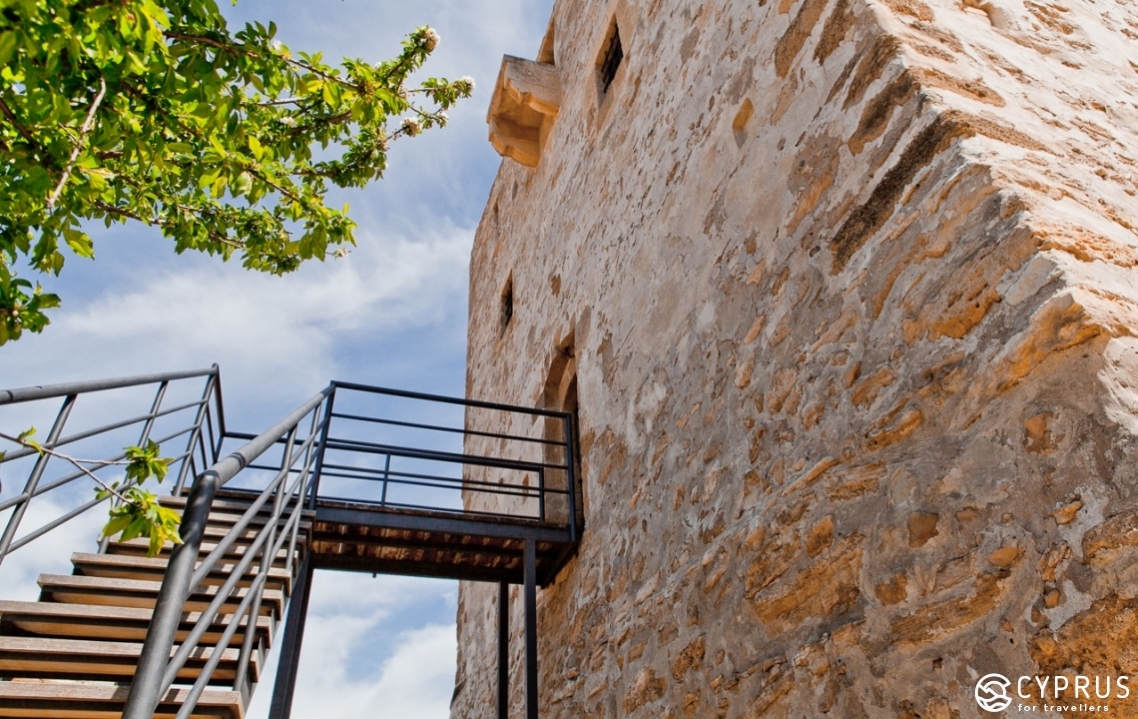
The cultural museum (which would probably be more accurately named a local history museum) was founded in 1993 and is a traditional one-story stone house owned by the Angelidou family, which was handed over to the municipality of Pyla by previous generations. It is part of the old Orthodox community, which means its construction is more in line with Greek houses and it has a cross carved into the stone above the entrance. It also has a covered gallery overlooking the courtyard orchard. The courtyard is also home to examples of agricultural machinery and tools (harrows and mowers, forks, mechanical tools, pumps, etc.) that serve as a visual guide to the evolution of local agricultural and farming technology. In particular, you’ll see English tools that were used on display. Inside the house you’ll find it is decorated in a traditional style with folk elements.
Please note: some village museums in Cyprus don’t give clear information about their opening hours, however they might have contact details. In Pyla, there was neither.
The main church of the village is the Orthodox Church of Agios Georgios, a relatively new stone church (built in 1998) with mosaics and stained glass window details. It is surrounded by a wide open space as is customary in Cypriot villages.
It is near the village’s central square and was built on the foundation of an old church, which was also dedicated to St. George (but was destroyed in 1950). The interior of the church is adorned with a carved iconostasis.
The only part from the old church that survived is the icon of St. George painted in 1825. It can be seen in the church of the Archangel Michael, also in Pyla.
The Church of the Archangel Michael is in the heart of the village (and dates back to 1500). It is a Byzantine basilica (20x8 m) with a bell tower. The church has undergone repairs twice: in 1980 and 2006. The ancient foundation stone was revealed as a result of the works.
The Church of Panagia Asprovouniotissa (Theotokos Belogornaya) is the oldest in Pyla. It is in the eastern part of the village. It was built in 1200 and was originally part of a monastery church, which served as the main church for many centuries, before Agios Georgios was built.
In 1850, the iconostasis was made and the building where it stood was reconstructed for the first time in the same year. It was later renovated and restored (in 1950 and in 2005) and thus eventually regained its original appearance. It is interesting that old statues once found in pagan temples or regional churches used to be widely used as a building material for laying the foundations of Christian churches. Panagia Asprovouniotissa was a relatively large basilica (15x30m) and therefore was no exception.
The Mosque in Pyla is a working mosque. It is open to those from the Turkish community who have come to worship. It is a fairly large building with a beautifully decorated minaret (which was restored in 2003).
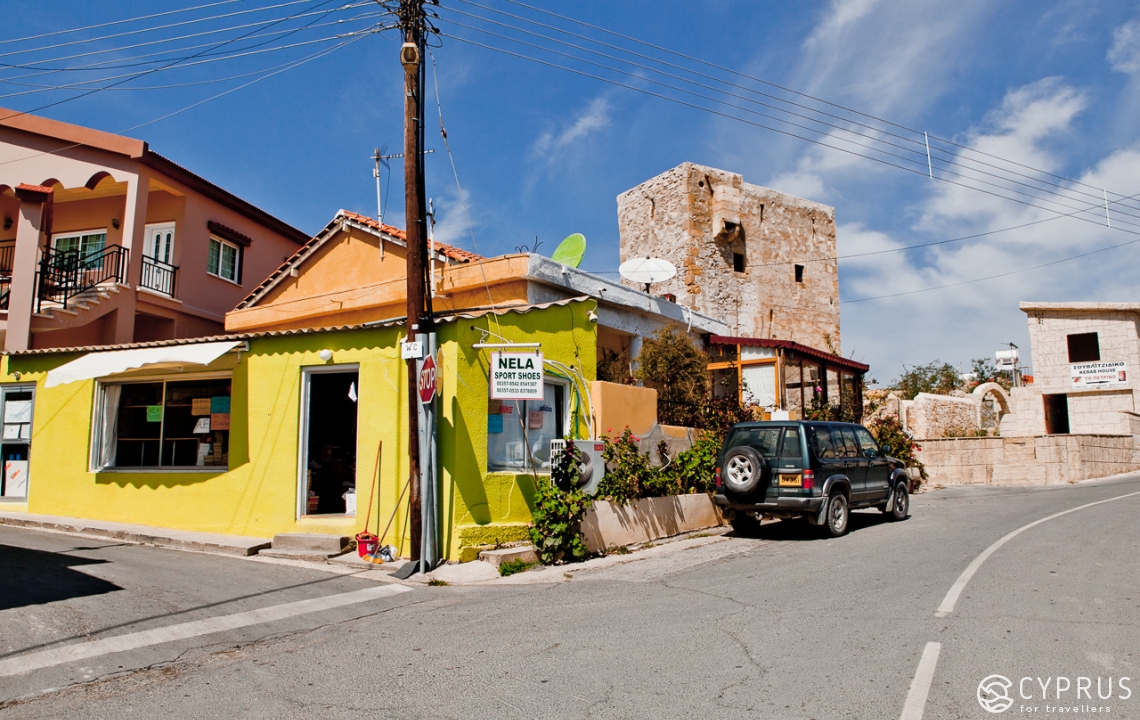
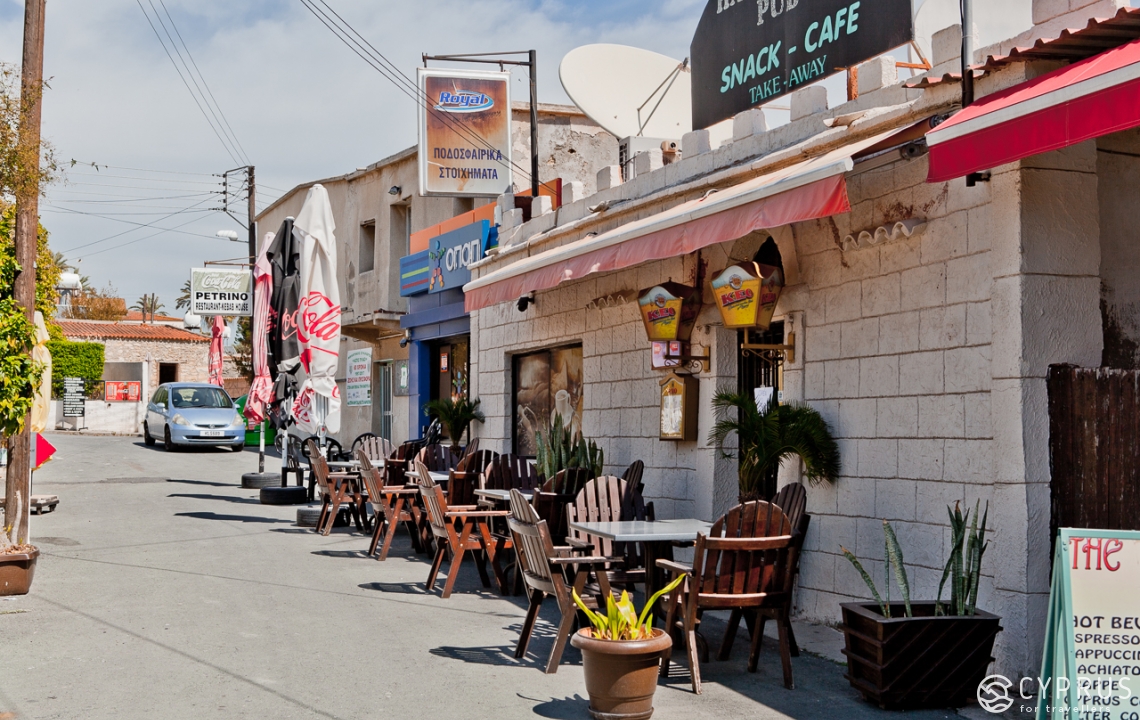
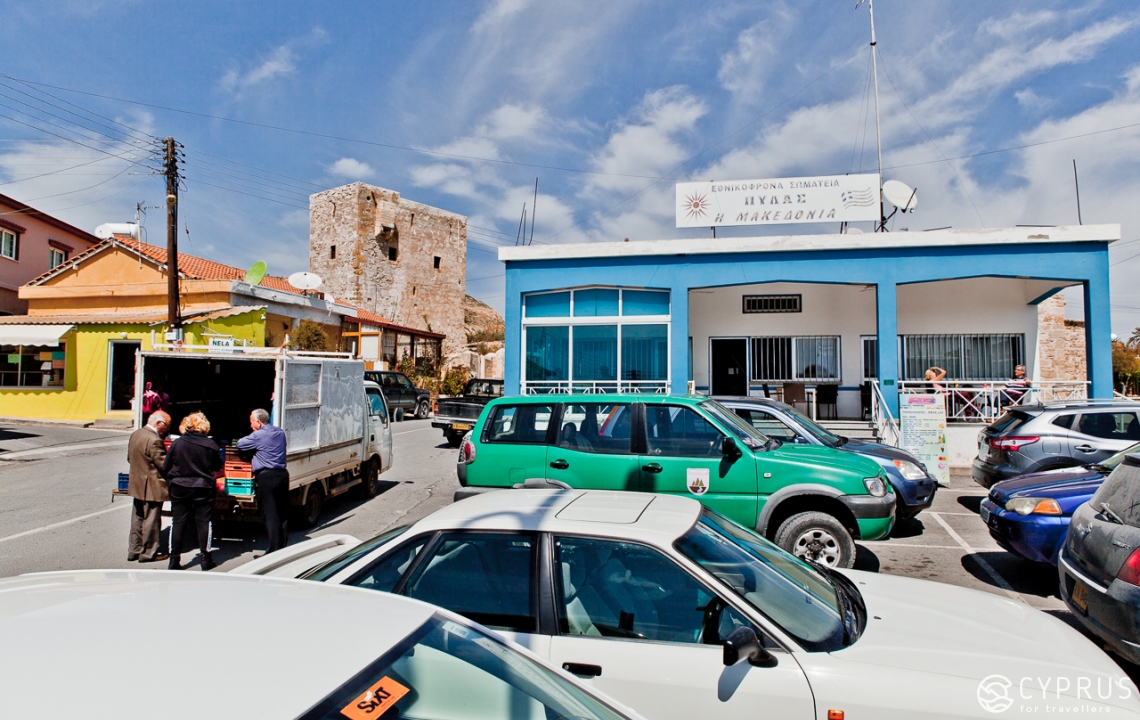
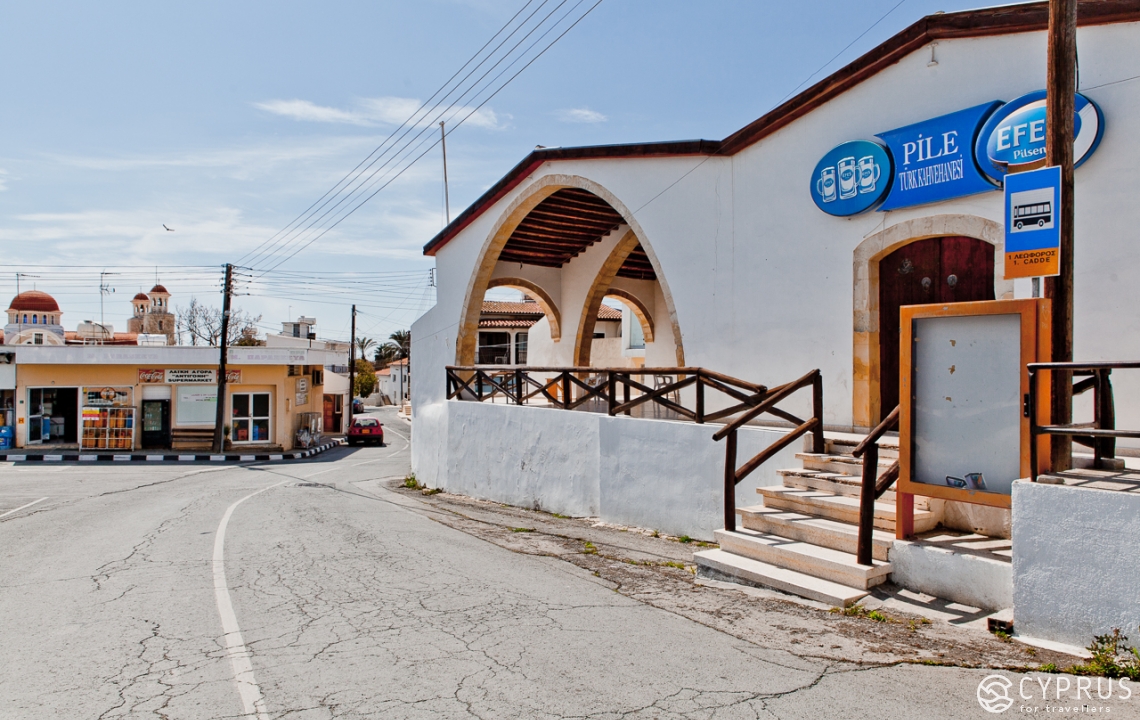
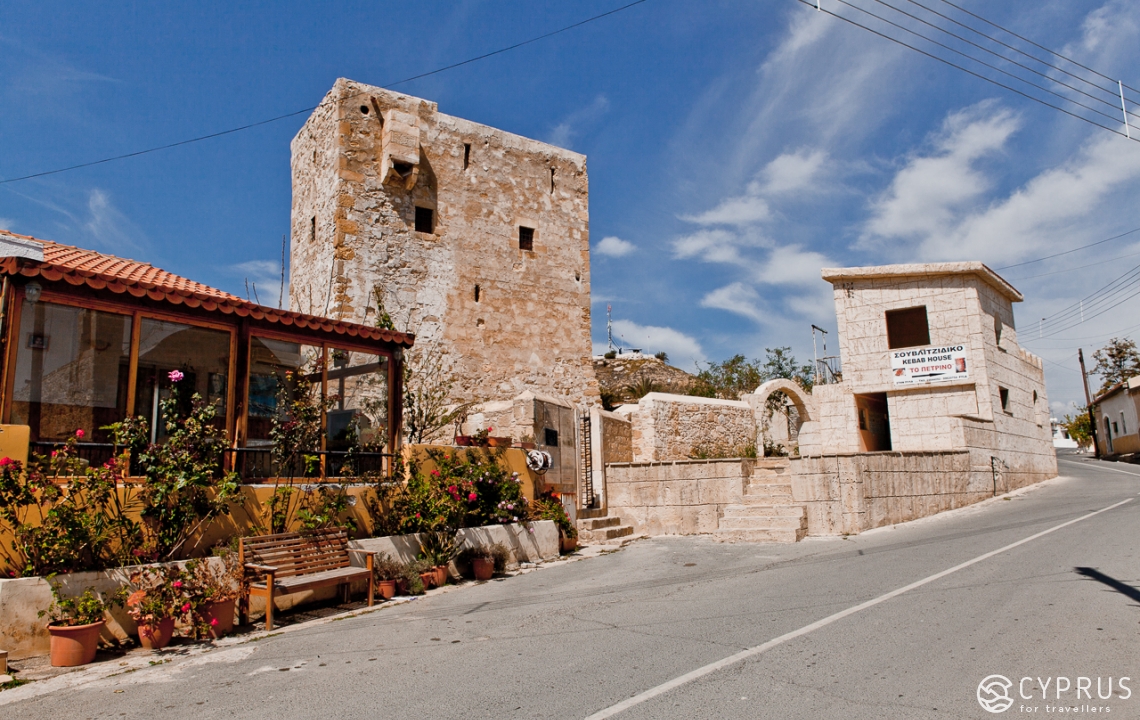
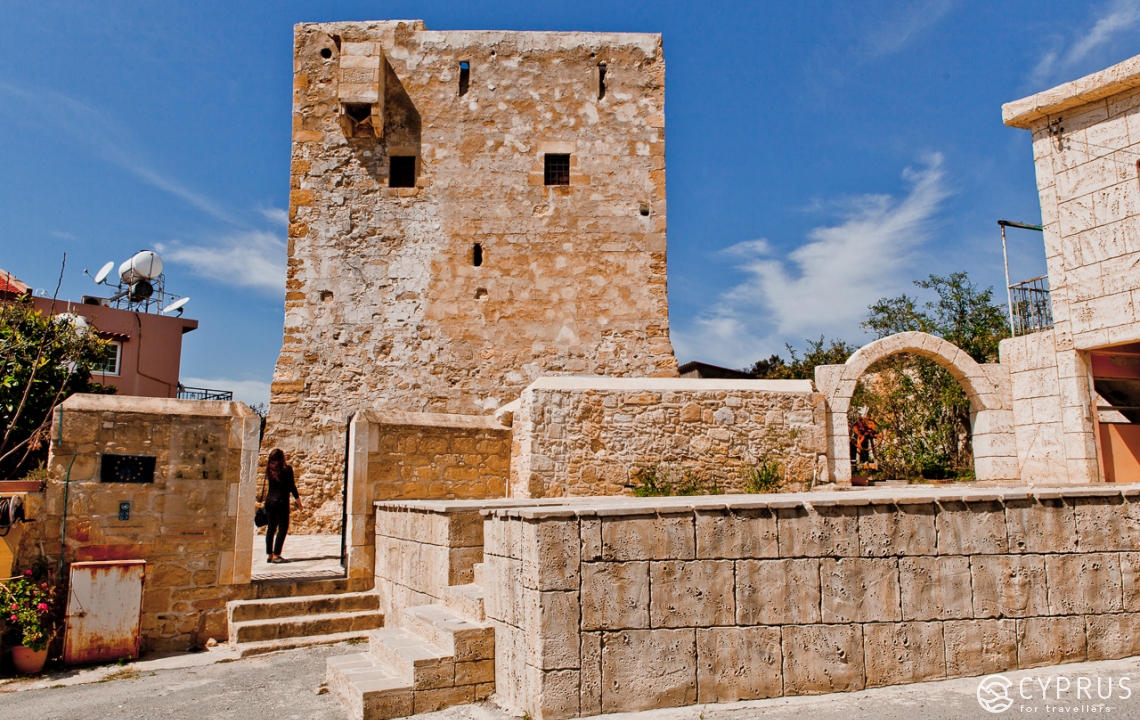
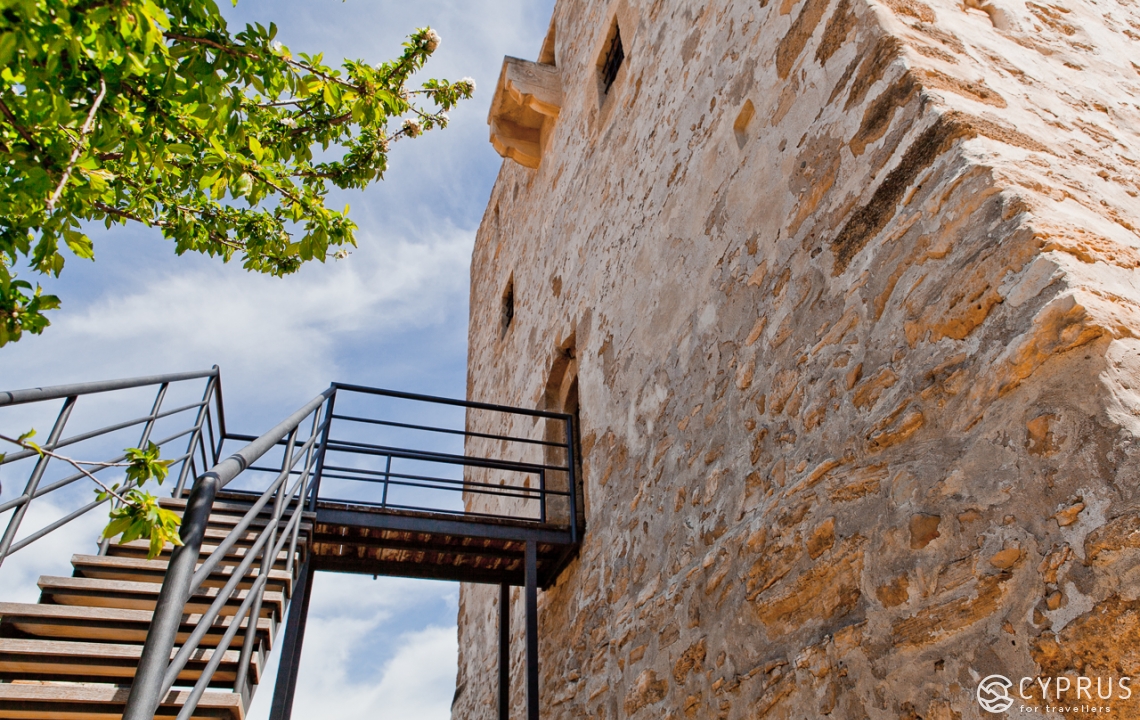
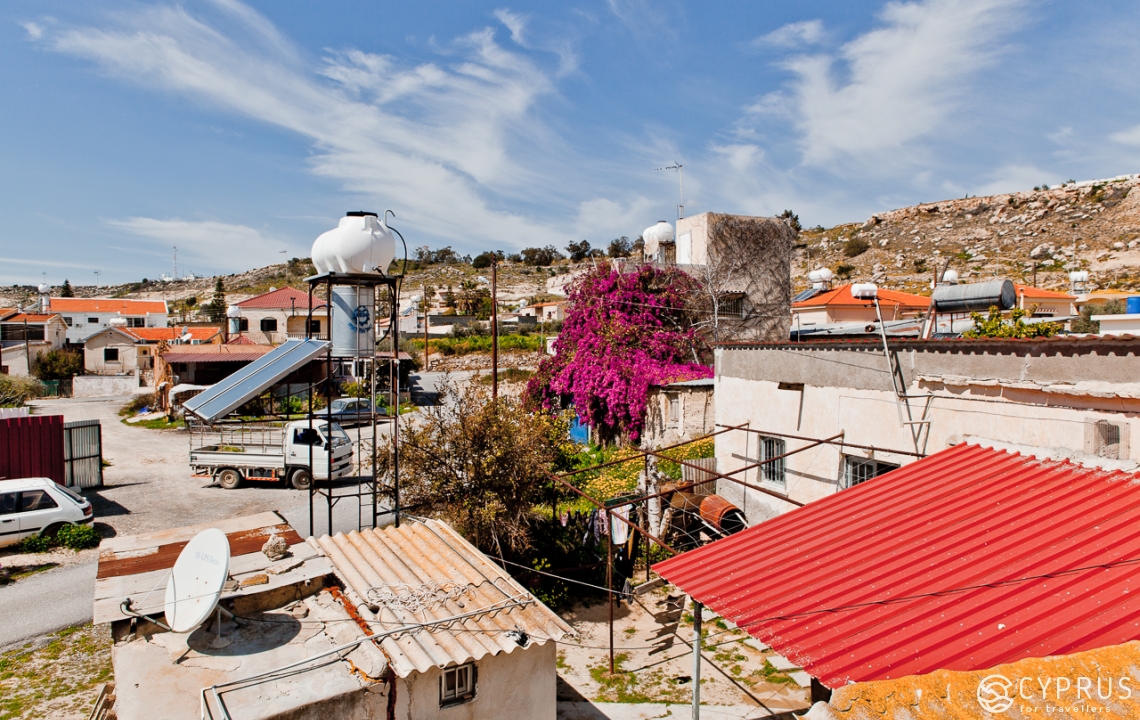
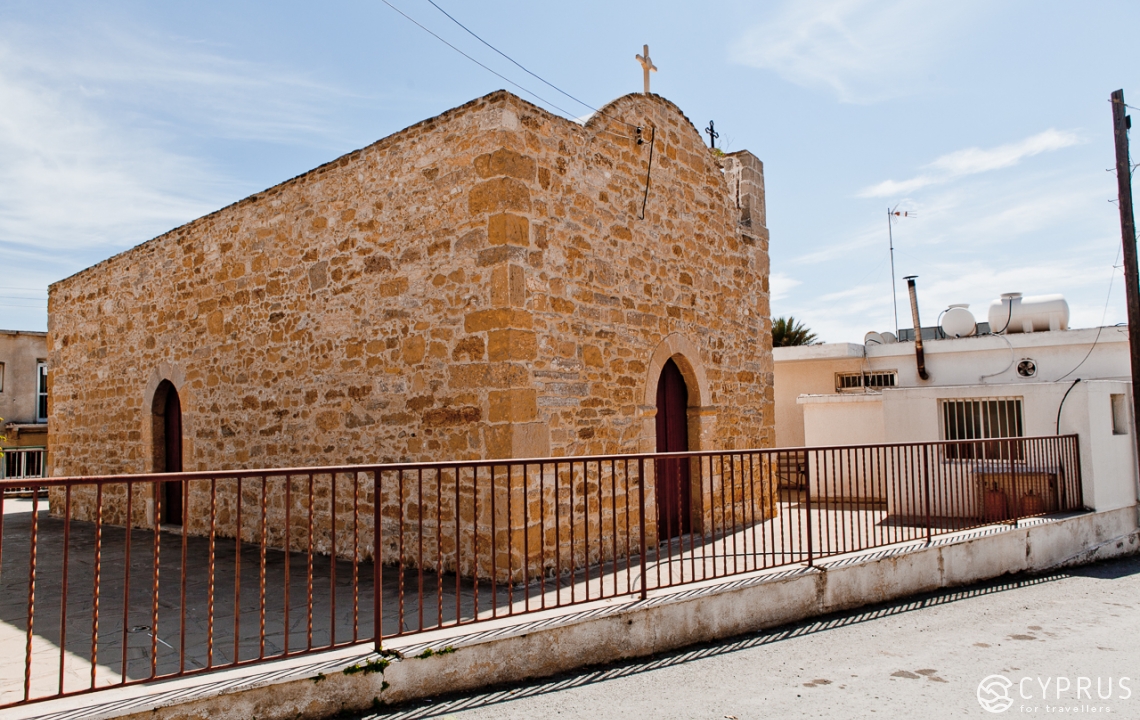
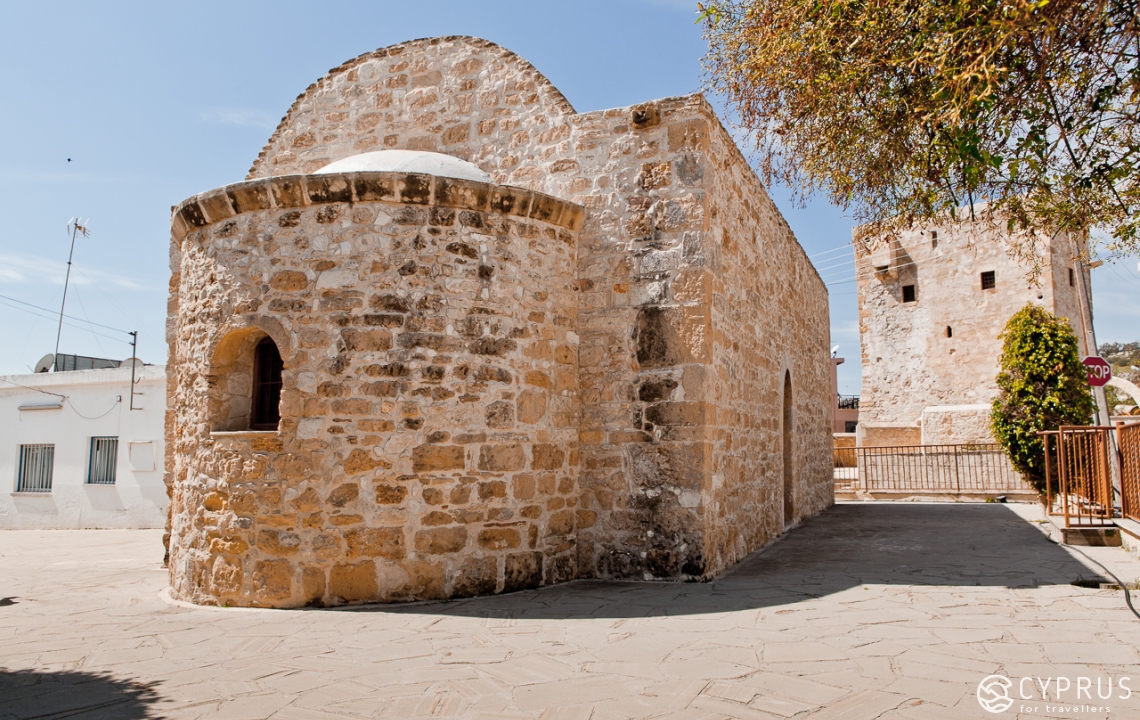
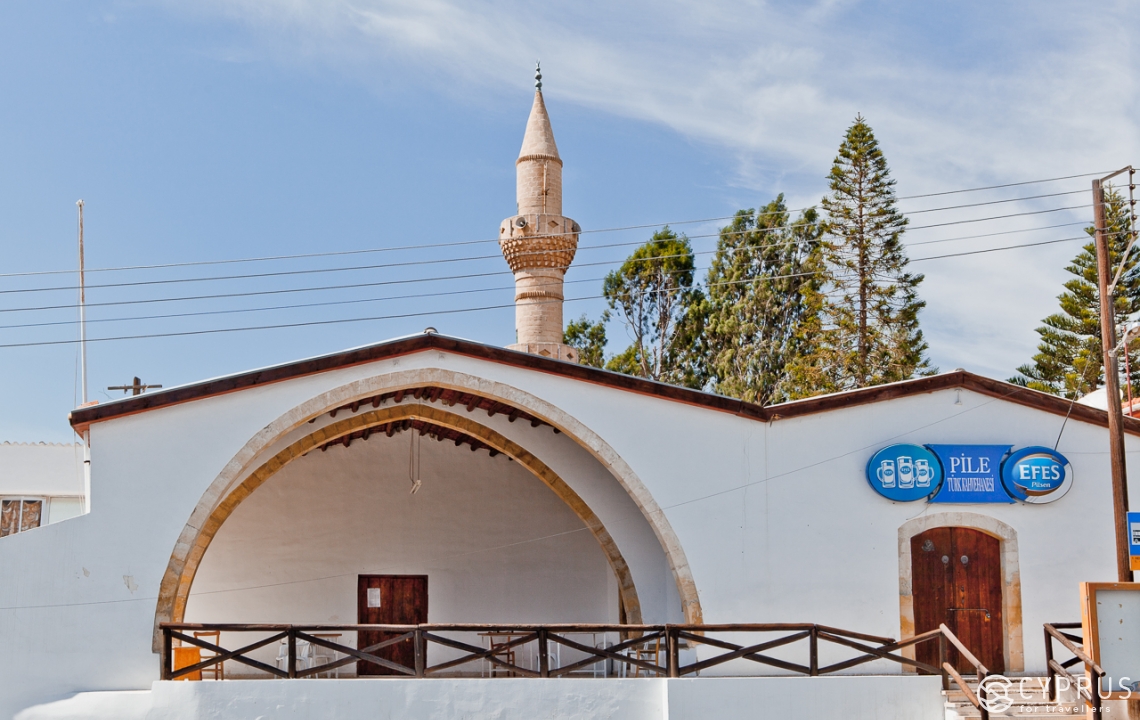

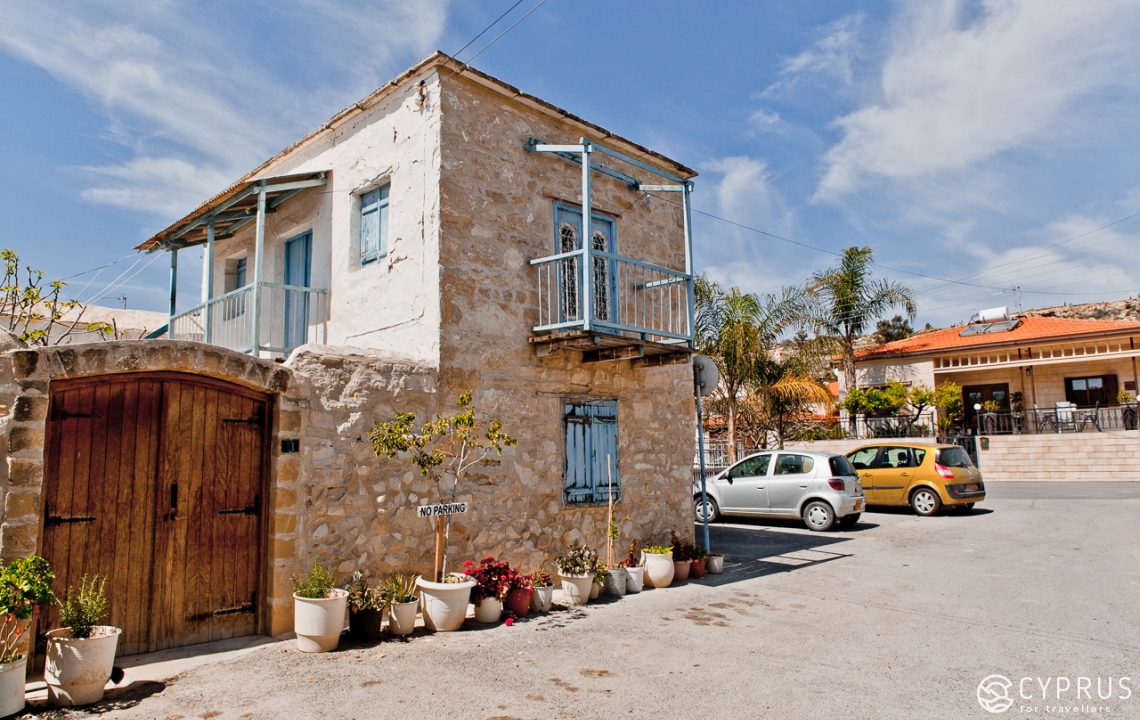
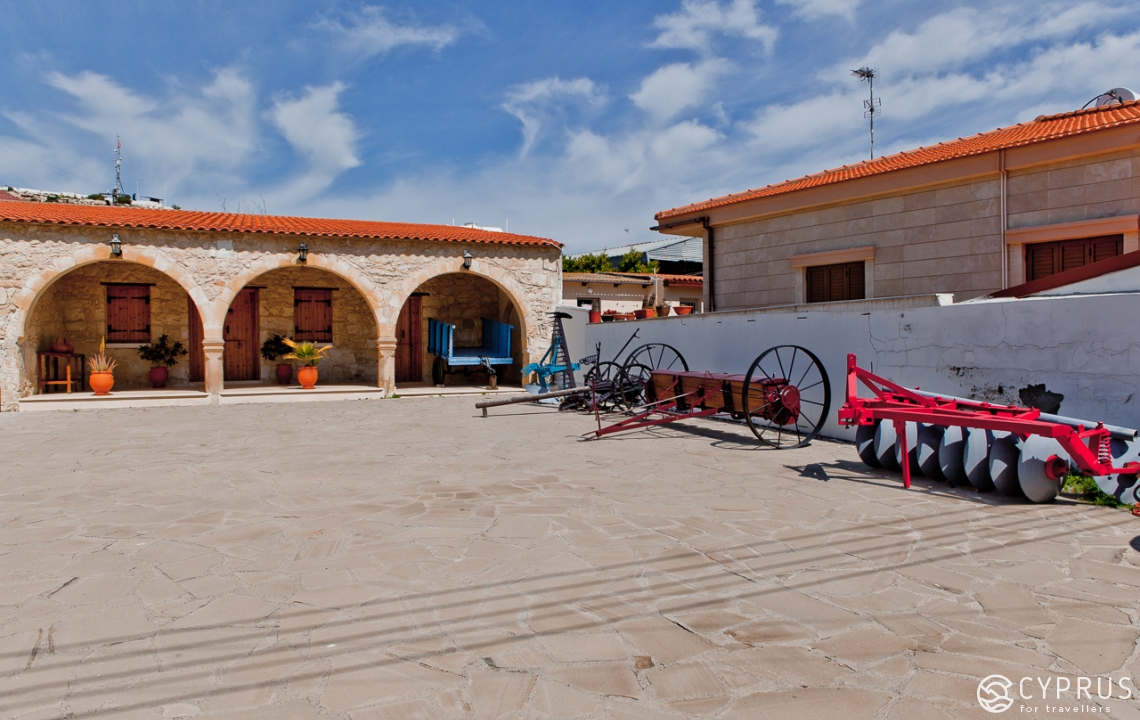
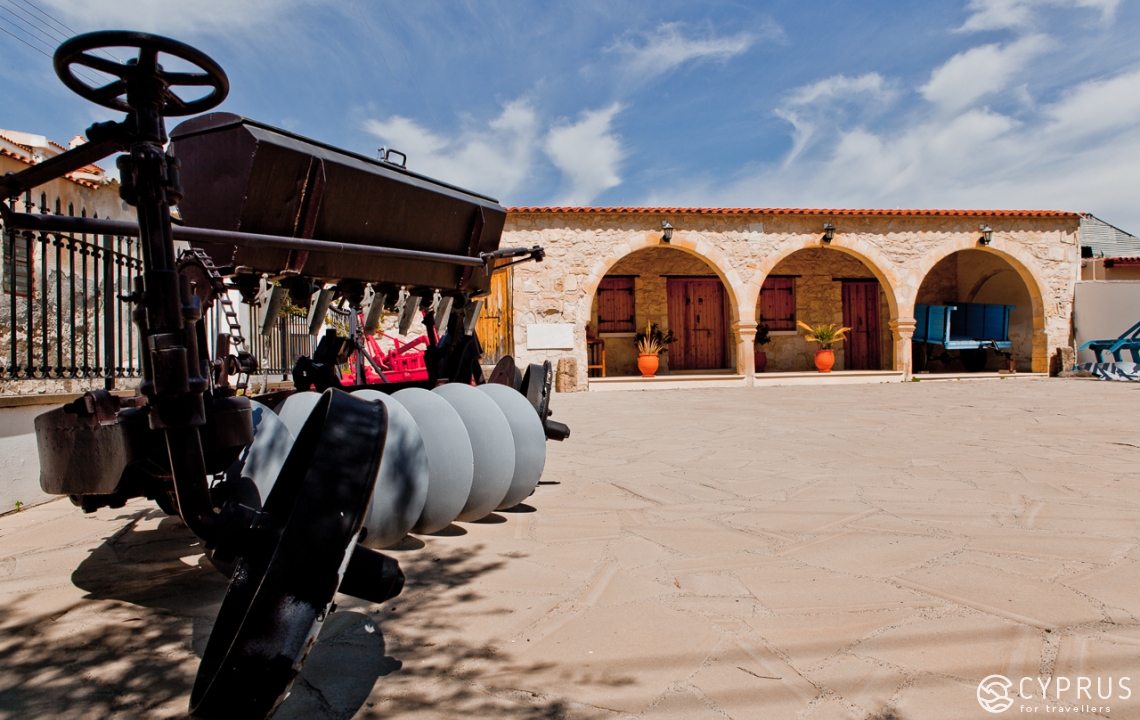
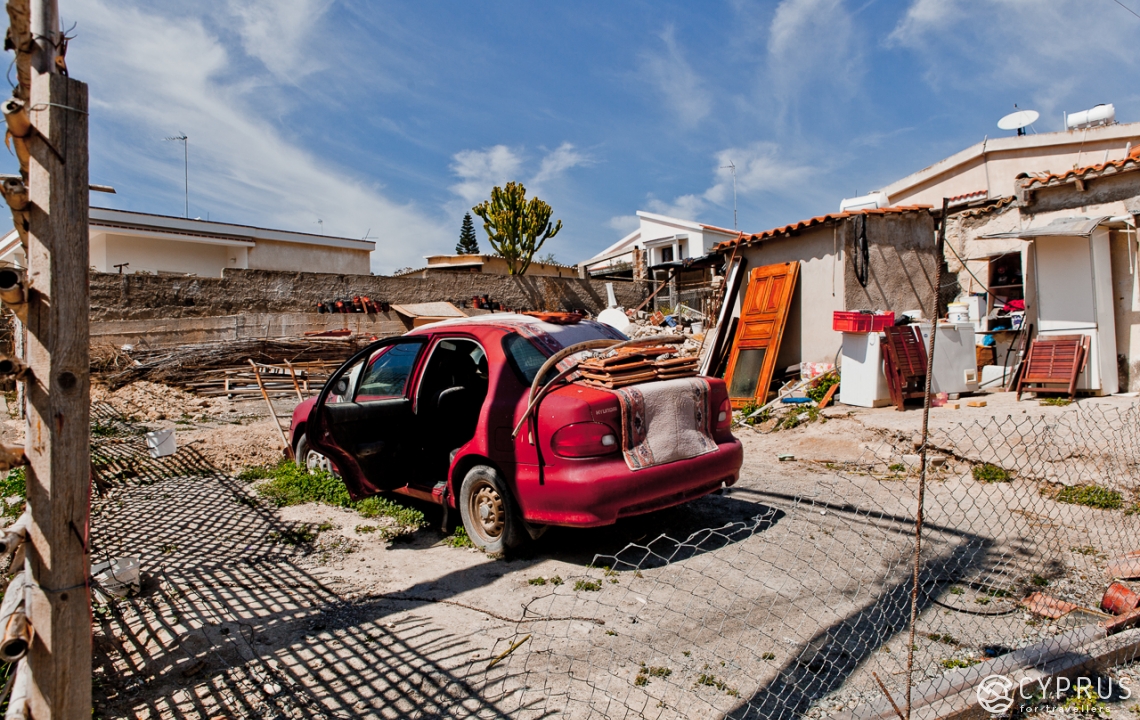
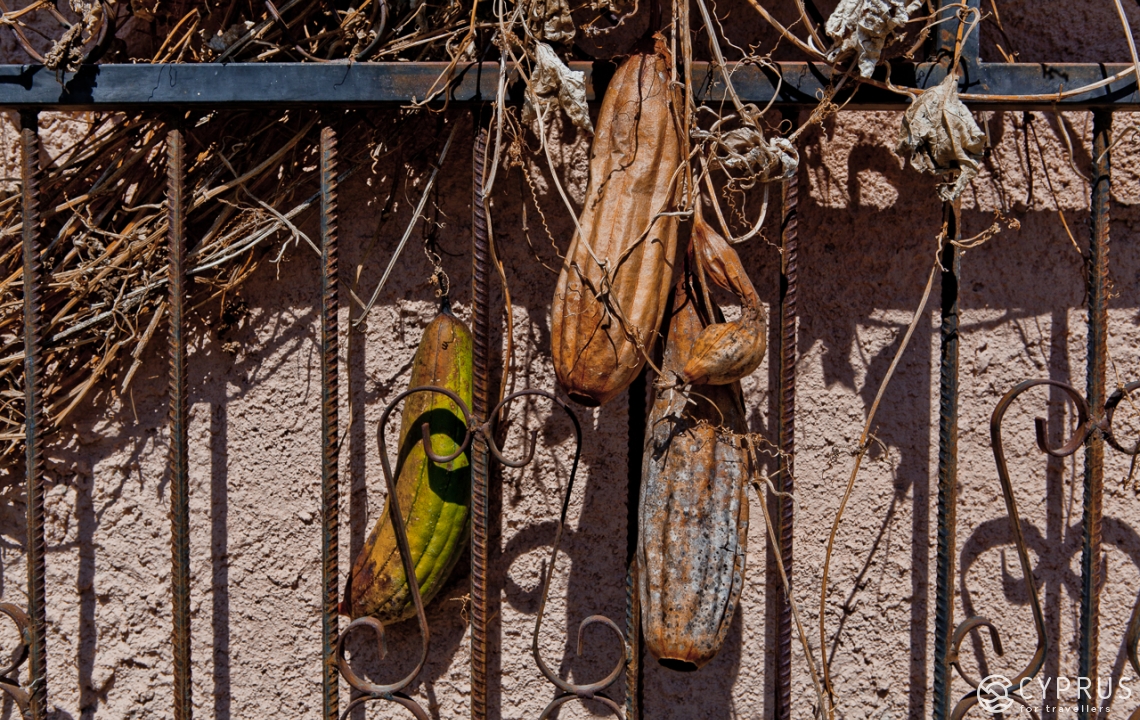
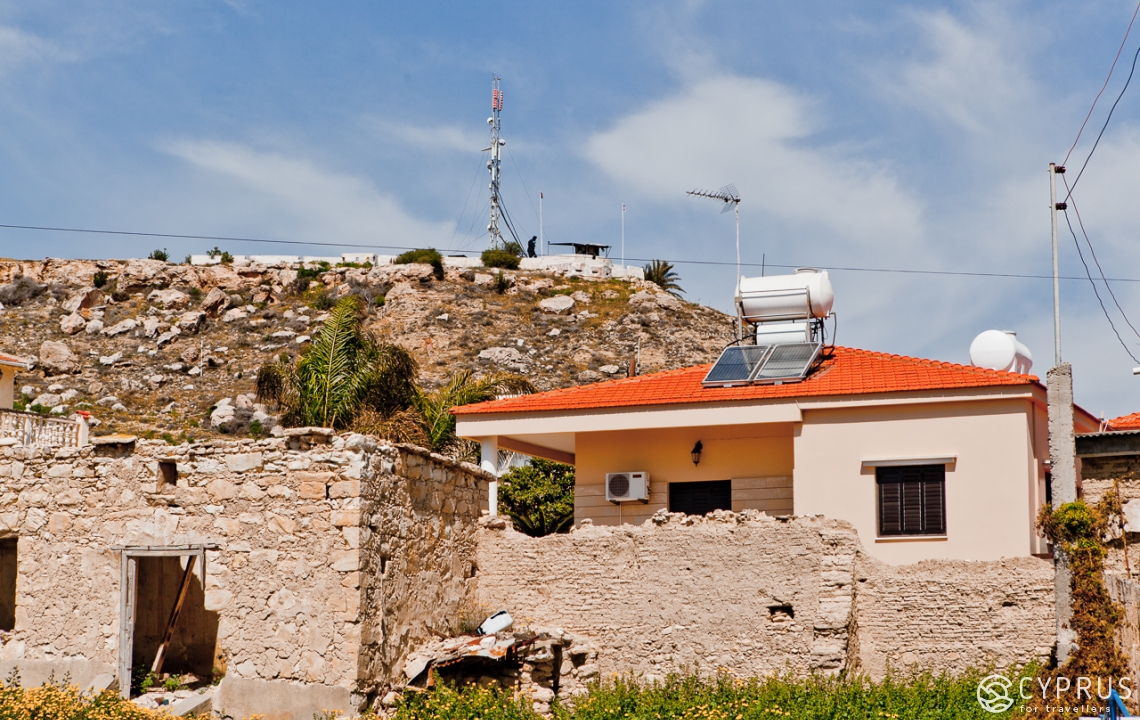
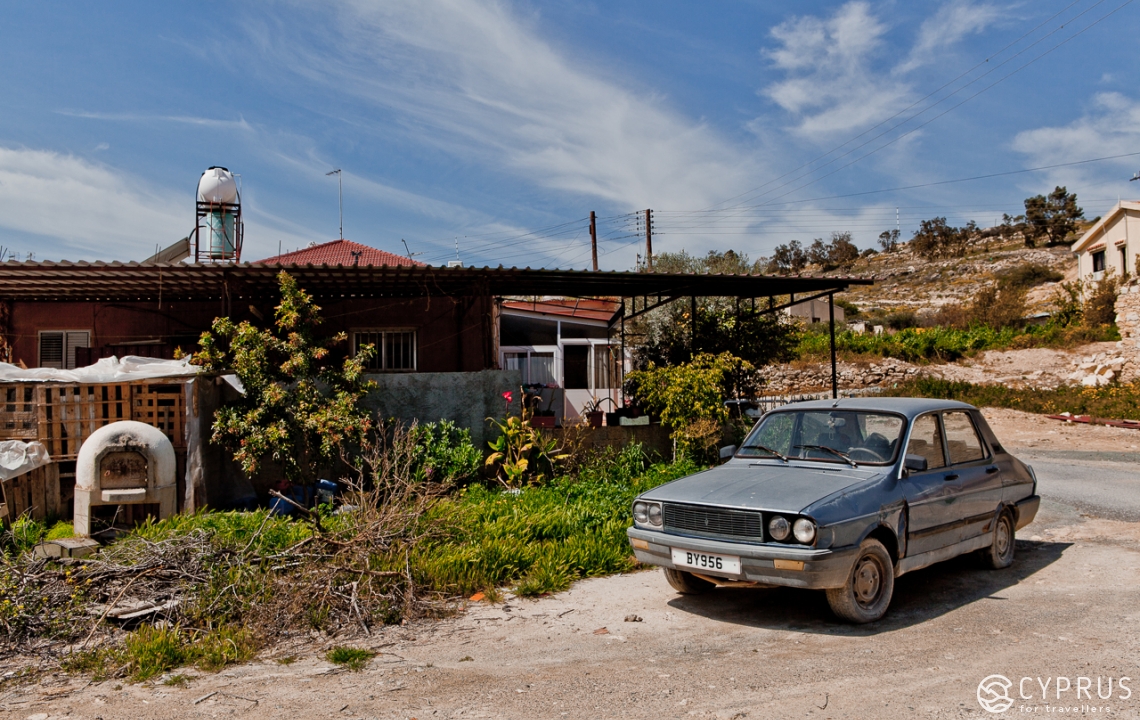
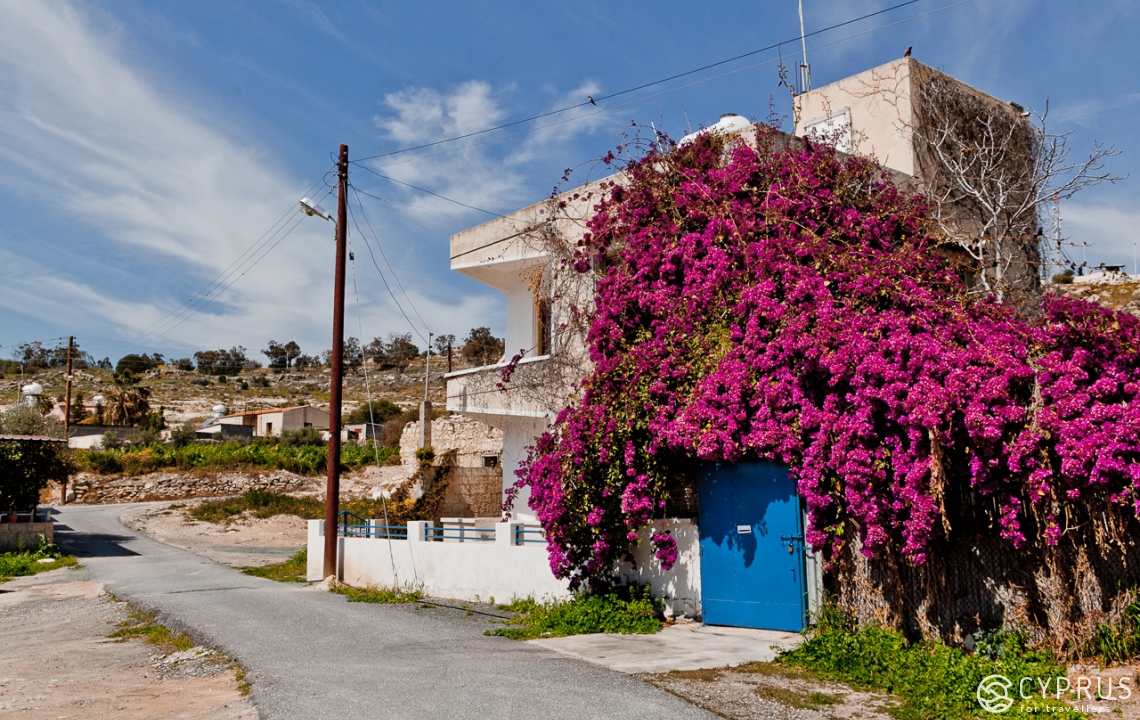
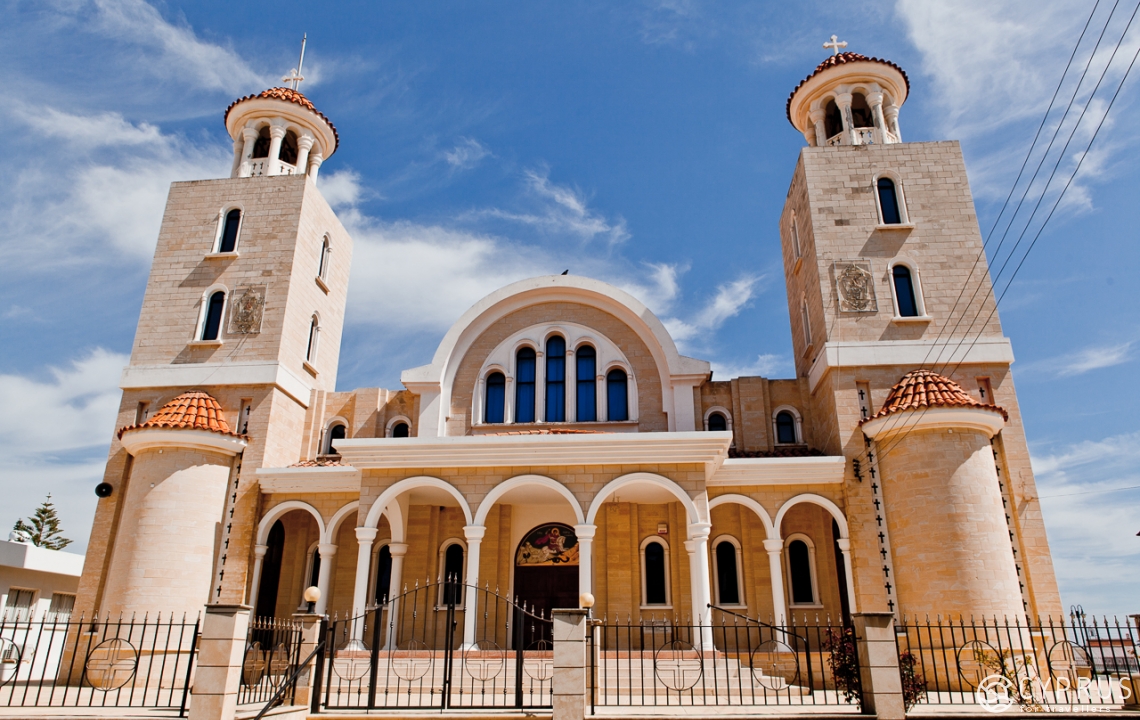
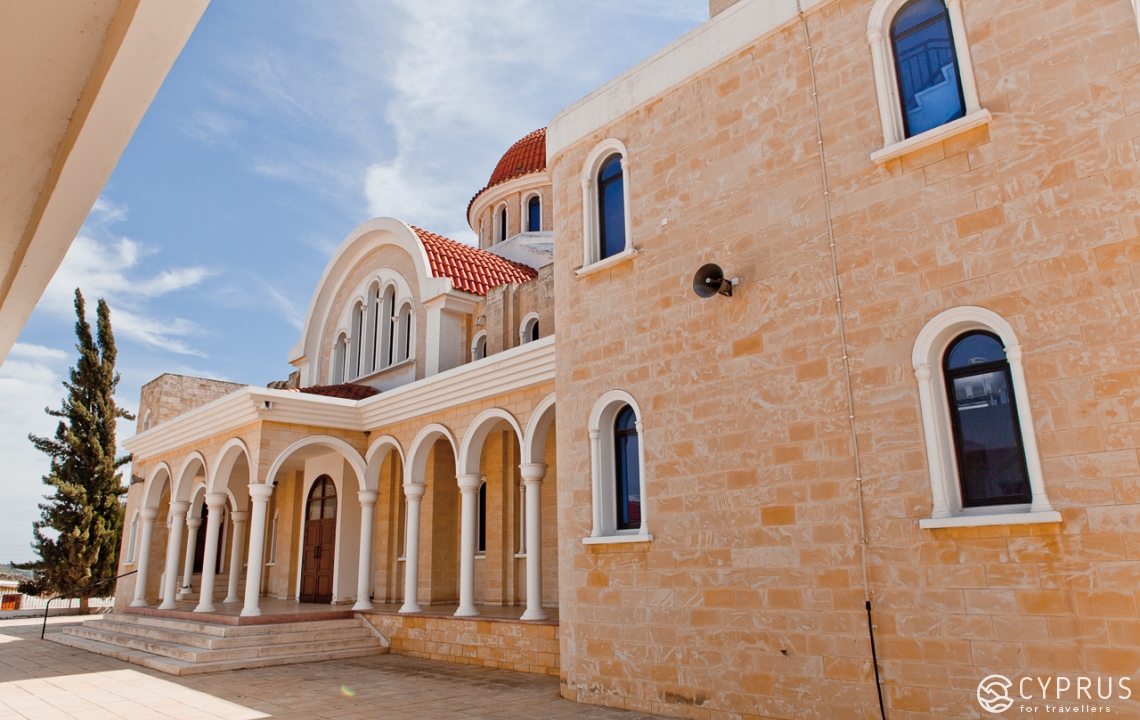
In detail:
Modern-day Pyla has its own sports clubs. Its football club is called Aspida Pylas FC and volleyball club, Foinikas Pylas. It also has a joint choir made up of Greek and Turkish Cypriots, which performs at communal village festivals.
Pyla locals regularly put on a summer dance festival with joint folk dance evenings held a couple times a month.
The singer, actress, composer and producer, Anna Vissi was born in Pyla in 1957 and has enjoyed popularity for many years in Cyprus, Greece and many other European countries. From 1995 to 2009, Anna released several platinum and gold albums and also performed three times at Eurovision (for Greece in 1980 and 2006, and for Cyprus in 1982).
Over the last several years, the Local Self-Government Council has launched a number of projects aimed at promoting cultural heritage, modernising and developing Pyla.
Examples of completed projects include: the stadium and sports centre were built, the church of Agios Georgios was newly rebuilt; and the churches of Archangel Michael and Panagia Asprovouniotissa were repaired and restored, etc.
There are also plans to build a main road along the coast and develop the promenades in the area. The bell tower of the church of the Archangel Michael will also be restored. In general, developing tourism in the region is one the local council’s top priorities.
Historical resources about Pyla:
William R. Caraher, R. Scott Moore, David K. Pettegrew, Pyla-Koutsopetria I: Archaeological Survey of an Ancient Coastal Town. Archaeological Reports, 21. Boston: American Schools of Oriental Research, 2014.
«The area of Pyla in ancient times» (Pyla Community Council Archives)
Website: www.pyla.com.cy
How to get there and where to stay:
By car:
From Larnaca — travel along Ammochostoustreet (for 26 minutes), then the along A3 motorway (from Aradippou, for 17 minutes);
From Paralimni — travel along the A3 motorway (for 30 minutes).
By bus from Larnaca to Pyla (the number 445): get off at the stop called «Kadde» and you’ll be in the heart of this village that lays on the border.
For more information, check out: www.cyprusbybus.com
By bus from Paralimni: see www.cyprusbybus.com
There are several luxury hotels near the village and you can also use the following resources to find other rented accommodation. Apartments and villas: Troy Legends (10-12 Mouson Street), Touch Blue Residences (Dhekelia Road), Pyla Gardens (112 University Avenue) and et.
Look out for our upcoming articles. See you soon!
